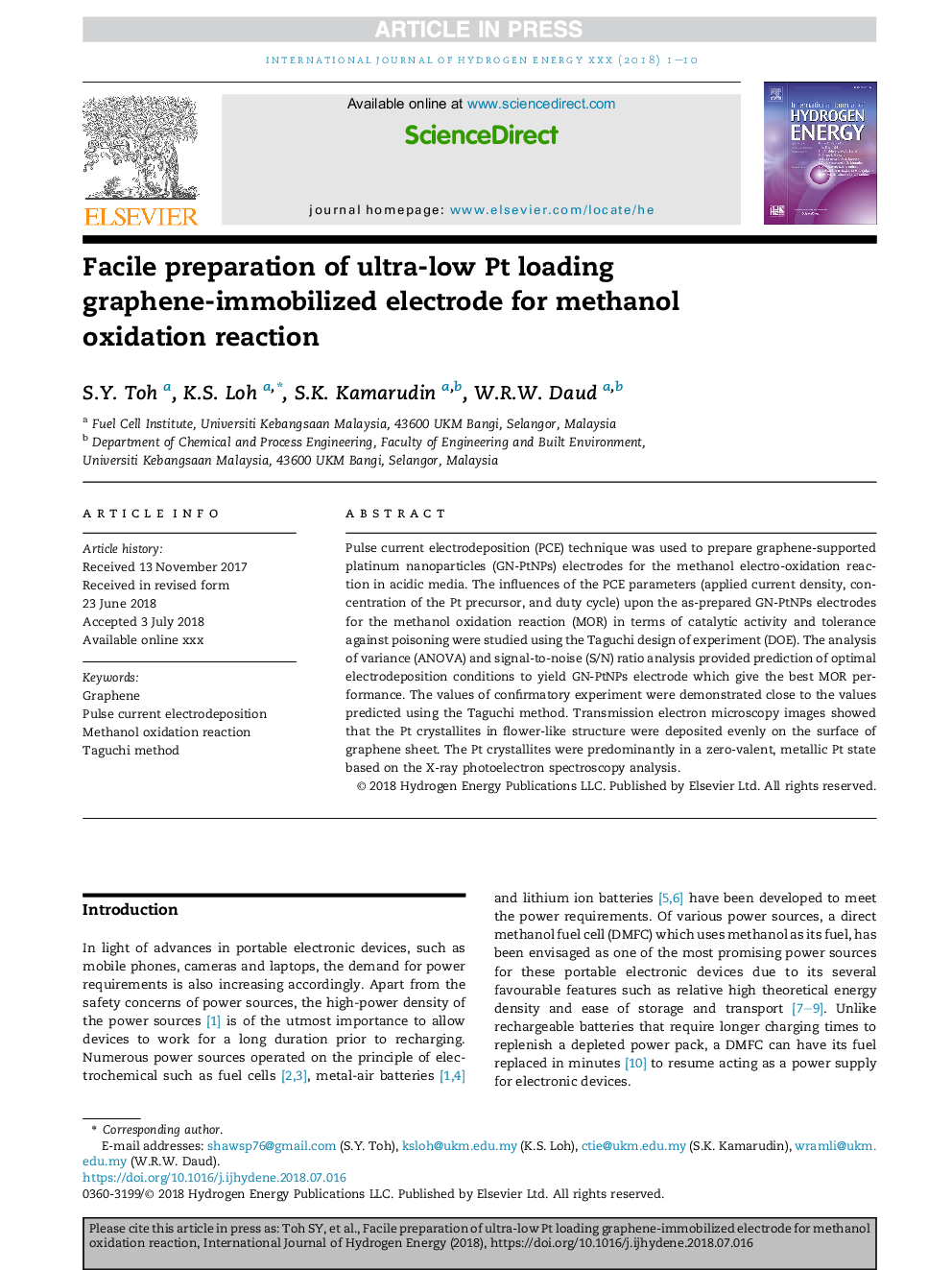| Article ID | Journal | Published Year | Pages | File Type |
|---|---|---|---|---|
| 8961287 | International Journal of Hydrogen Energy | 2018 | 10 Pages |
Abstract
Pulse current electrodeposition (PCE) technique was used to prepare graphene-supported platinum nanoparticles (GN-PtNPs) electrodes for the methanol electro-oxidation reaction in acidic media. The influences of the PCE parameters (applied current density, concentration of the Pt precursor, and duty cycle) upon the as-prepared GN-PtNPs electrodes for the methanol oxidation reaction (MOR) in terms of catalytic activity and tolerance against poisoning were studied using the Taguchi design of experiment (DOE). The analysis of variance (ANOVA) and signal-to-noise (S/N) ratio analysis provided prediction of optimal electrodeposition conditions to yield GN-PtNPs electrode which give the best MOR performance. The values of confirmatory experiment were demonstrated close to the values predicted using the Taguchi method. Transmission electron microscopy images showed that the Pt crystallites in flower-like structure were deposited evenly on the surface of graphene sheet. The Pt crystallites were predominantly in a zero-valent, metallic Pt state based on the X-ray photoelectron spectroscopy analysis.
Related Topics
Physical Sciences and Engineering
Chemistry
Electrochemistry
Authors
S.Y. Toh, K.S. Loh, S.K. Kamarudin, W.R.W. Daud,
